Ces dernières années, la technologie de séparation par membrane a été largement étudiée et appliquée comme l’une des nouvelles technologies de traitement des eaux usées. Comparée à d'autres technologies, telles que la séparation par gravité, la coagulation, la rupture d'émulsion, l'absorption et l'écrémage d'huile, la biodégradation, l'adsorption par floculation, l'échange d'ions et d'autres processus de séparation conventionnels, cette technologie présente de nombreux avantages. Tels qu'une forte sélectivité, une faible consommation d'énergie, une large gamme d'applications, un équipement simple et respectueux de l'environnement, une utilisation facile, etc. La membrane de séparation huile-eau peut être divisée en membrane organique et membrane inorganique selon le matériau. La membrane organique a un large éventail d’applications dans la recherche scientifique et dans les domaines commerciaux. Par rapport à la membrane organique, la membrane céramique inorganique a une forte stabilité chimique et thermique, une excellente résistance à la saleté et à la pression, facile à nettoyer, une résistance mécanique élevée, une longue durée de vie, de sorte que l'utilisation d' une membrane céramique pour la séparation des émulsions huile dans l'eau est un atout majeur. s'orienter. La modification hydrophobe peut améliorer la mouillabilité du film céramique en huile, améliorer l'efficacité de séparation de l'émulsion eau dans l'huile et améliorer la stabilité chimique et la durabilité du film céramique.
La forme du système d’émulsion eau dans huile (E/H) est que l’eau est dispersée dans l’huile sous forme de petites gouttelettes. La contamination de la membrane lors de la séparation membranaire entraîne une diminution du flux de perméation et du taux de rétention avec l'allongement de la durée d'utilisation, ce qui raccourcit la durée de vie de la membrane et limite l'application de la technologie de séparation membranaire. La modification de la surface de la membrane céramique peut améliorer la sélectivité spécifique et l'effet de séparation de la membrane, réduire l'interaction entre la surface de la membrane et les molécules d'alimentation inutiles et réduire dans une certaine mesure la pollution de la membrane. Par conséquent, la séparation des émulsions eau dans l'huile sélectionne généralement un film hydrophobe, qui permet aux gouttelettes d'huile de passer à travers et de piéger les gouttelettes d'eau en utilisant les caractéristiques hydrophobes et lipophiles de la surface de la membrane, de manière à obtenir l'effet huile-eau. séparation.
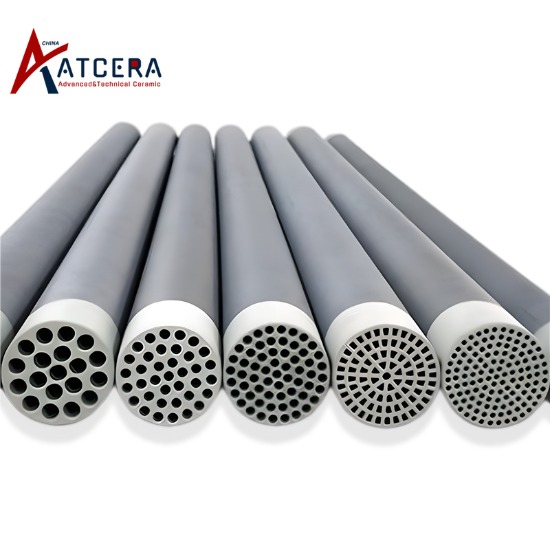
Modification hydrophobe de la surface de la membrane céramique
La modification hydrophobe de la surface du film céramique est généralement obtenue en combinant ou en adhérant à des matériaux hydrophobes, en sélectionnant une énergie de surface inférieure, une rugosité et une structure de surface appropriées, telles que l'utilisation de silane ou de thiol pour fournir des propriétés chimiques de surface, et l'introduction de microns ou de nanostructures pour obtenez une surface avec une meilleure rugosité, améliorez l'effet hydrophobe de la surface du film et améliorez les performances de séparation.
Il existe trois méthodes courantes pour la modification hydrophobe de la surface d’une membrane céramique : l’imprégnation, le sol-gel et le dépôt chimique en phase vapeur.
01. Méthode de trempage
Impregnation method (Impregnation method) does not require special equipment, just the original ceramic film directly immersed in hydrophobic substance solution, the method is simple and direct, easy to operate, low cost. The hydrophobic modification of ceramic membrane surface is carried out by immersion method, which usually uses the functional group of hydrophobic substance to connect with the hydroxyl group on the ceramic membrane surface through condensation reaction.
Taking siloxane as a modifier for example, the operation steps of the impregnation method are as follows: dissolve the organosilane in water or ethanol and hydrolyze it to obtain a reactive silanol solution; When the pre-treated ceramic membrane is immersed in the solution, the reactive silane molecules can be adsorbed on the surface of the membrane, and the hydrophobic membrane can be obtained.
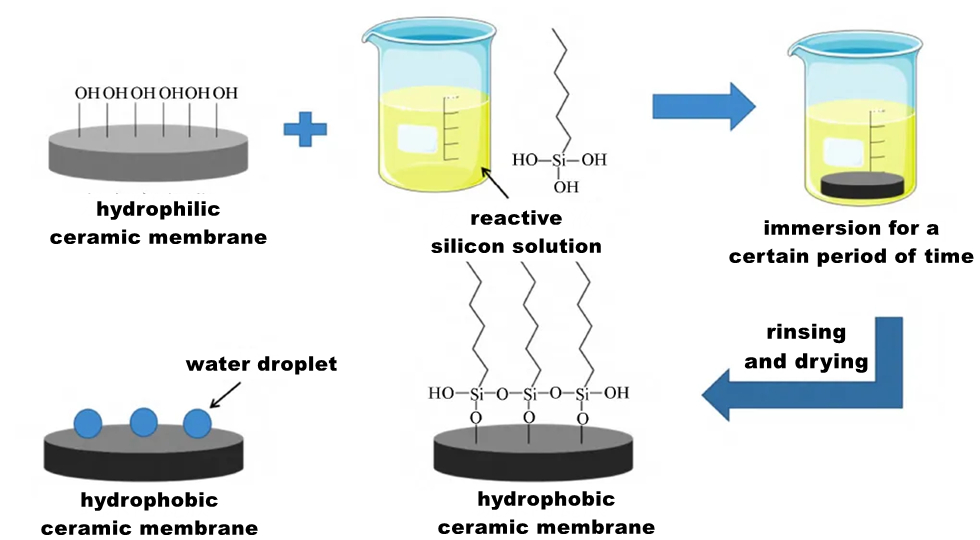
Hydrophobic effect is the result of the joint action of surface roughness and surface energy. In the study of hydrophobic modification of ceramic film, it is usually first to provide a certain rough micro-nano structure on the surface of ceramic film, and then modify it with low surface energy. In addition to the modification with silane coupling agent, mercaptan is also the preferred material to reduce the surface energy of the film.
In summary, the operation and steps of hydrophobic modification of the surface of ceramic film by impregnation method are relatively simple, and are greatly affected by the type of modifier, the concentration of modifier, the impregnation time, the number of impregnation times and the roughness of the surface of ceramic film. In addition, because the number of substances with low surface energy that react depends on its own concentration and the number of hydroxyl groups on the surface of ceramic film, Therefore, the method also has a great dependence on the reactive hydroxyl group on the surface of the ceramic membrane.
02. Sol-gel method
Sol-gel technique uses compounds containing highly chemically active components as precursors, and mixes these raw materials uniformly in the liquid phase. After chemical reactions such as hydrolysis and condensation, a stable transparent Sol system is formed in the solution. The sol is slowly polymerized among aged colloidal particles to form a gel with a three-dimensional network structure. The gel was dried and sintered to produce molecular and even nanostructured materials.
The hydrophobic modification of ceramic membrane by sol-gel method can form a large rough structure on the surface of the membrane, and can directly bind low surface energy chemicals. However, the early introduction of organosilane into the sol solution may lead to the formation of large volume polymers, resulting in poor modification effects.
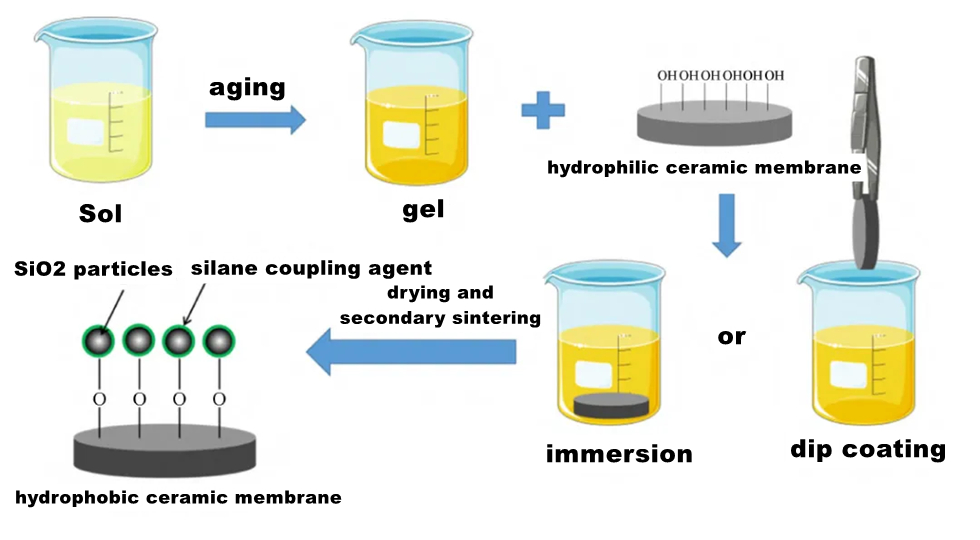
Compared with other methods, sol-gel method can prepare a stable hydrophobic surface with good separation effect, but it takes a long time to prepare the sol solution, and macromolecular polymers may be formed in the process, which affects the modification effect. In general, secondary sintering is required after the completion of coating, and the process is more complicated. In addition, excessive temperature during secondary sintering will destroy the structure of the film, reduce the hydrophobicity and stability of the film, and the aperture of the modified film will decrease with the increase of the number and time of sol-gel coating. In addition, the sol has an important effect on the formation of colloid in the process of colloid preparation, and then affects the film forming quality. Coating time and times, ambient temperature and humidity, heating rate, calcination temperature and calcination time all have a great influence on the subsequent coating drying process. At present, the process can be simplified by reducing the sintering steps at high temperature, forming a rough structure on the surface of the film at one time and combining with low surface energy materials, so as to reduce the damage of the film structure at high temperature.
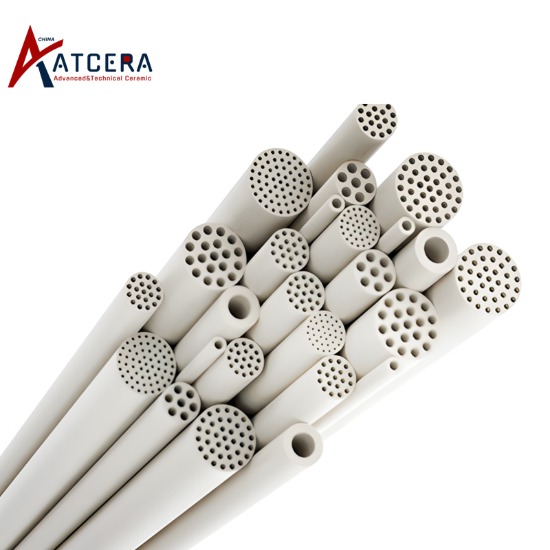
03 Chemical vapor deposition method
chemical vapor deposition (CVD) uses gas phase reactants deposited on the substrate surface to form a solid film with specific chemical properties. The method has the advantages of controllable film composition, good film repeatability, uniform film layer, wide application range, no restriction on the shape of the substrate and no damage to the substrate material, and is an effective method to change the surface properties and microstructure of the film. For hydrophobic modification of the ceramic film using this method, the ceramic film needs to be placed in a closed container and heated at the boiling point temperature of the organosilane for a long time. The organosilane vapor is passed through to react with the hydroxyl group on the surface of the ceramic film, and the reaction principle is the same as that of the impregnation method.
Under normal circumstances, in order to make the organosilane reagent can be fully utilized, it is necessary to select a closed container with a size similar to the ceramic membrane, so that the contact and reaction of organosilane vapor with the ceramic membrane can be maximized.
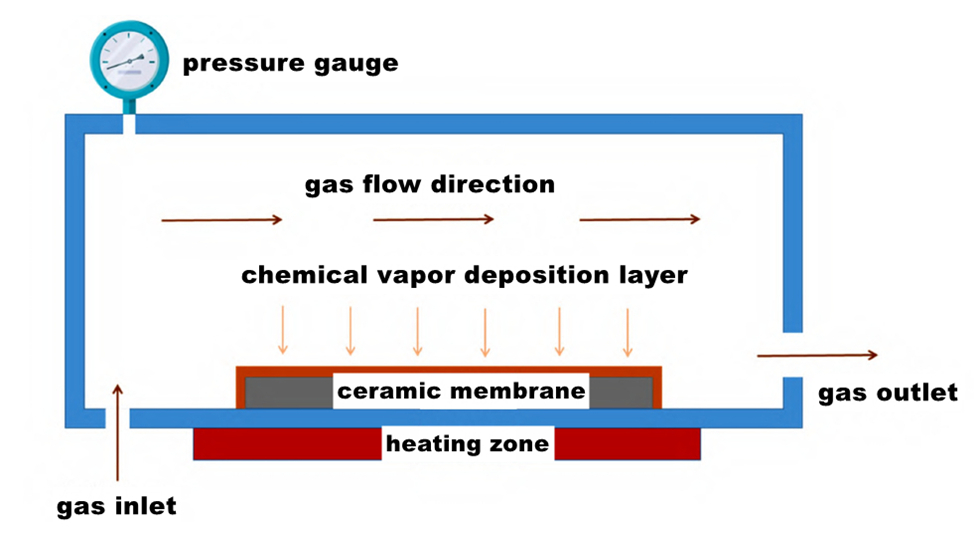
Le dépôt chimique en phase vapeur (CVD) est la méthode privilégiée pour préparer des micro-nanoparticules et des nanotiges à la surface du film et former la microstructure ordonnée. Le film céramique hydrophobe modifié par dépôt chimique en phase vapeur présente les avantages d'une couche de film uniforme, d'une bonne stabilité et d'une large plage d'application, mais en même temps, l'épaisseur du film hydrophobe est fine, les propriétés mécaniques sont insuffisantes et les défauts tels que les fissures et les bulles se produisent facilement sous un impact externe. Les gouttelettes d'eau et les polluants pénètrent dans le film par les fissures, détruisent sa structure interne et réduisent la propriété hydrophobe et la stabilité du film. Certains des organosilanes impliqués dans la réaction de dépôt sont toxiques et nuisent au corps humain et à l'environnement. De plus, la température de réaction requise par ce procédé est élevée, et la consommation d'énergie élevée et le coût élevé qui en résultent limitent son application dans la production industrielle réelle.





























